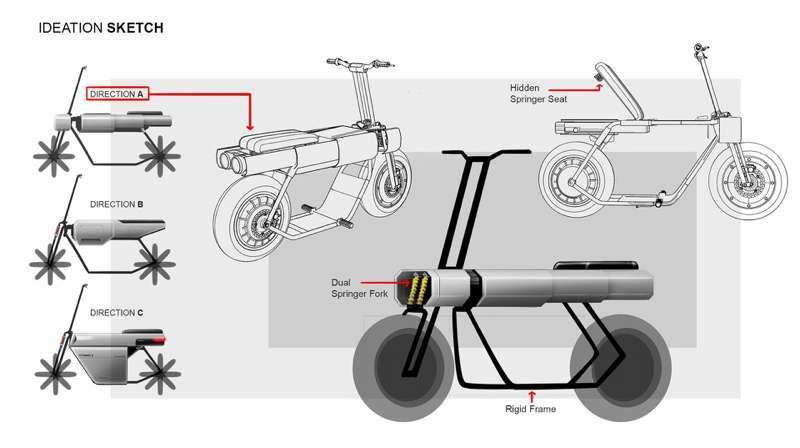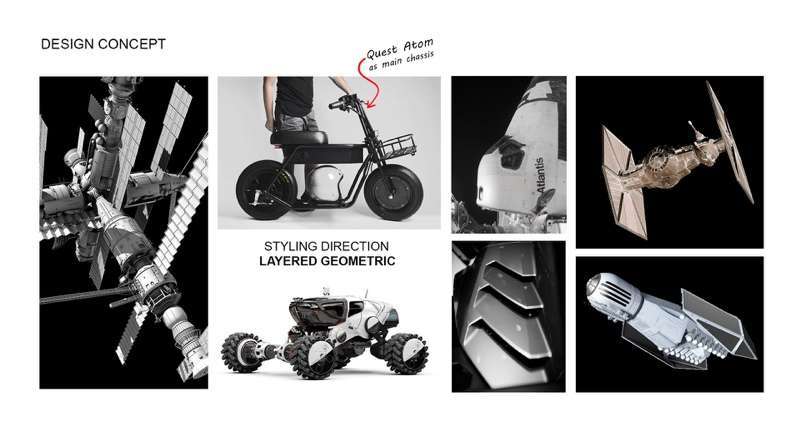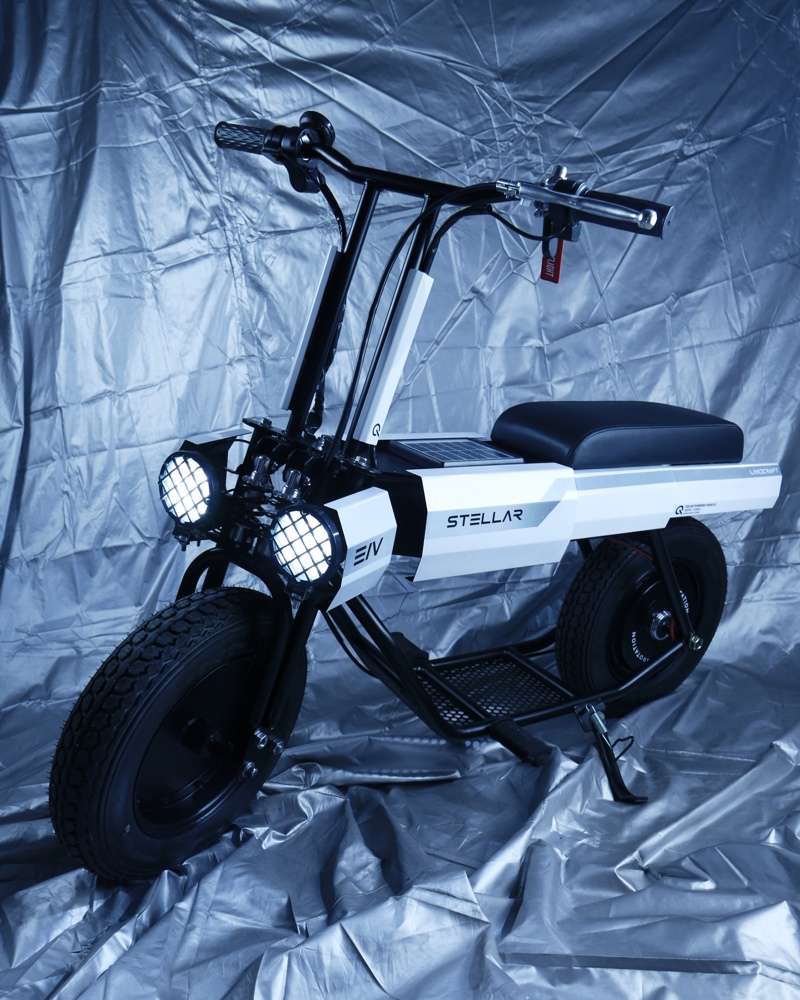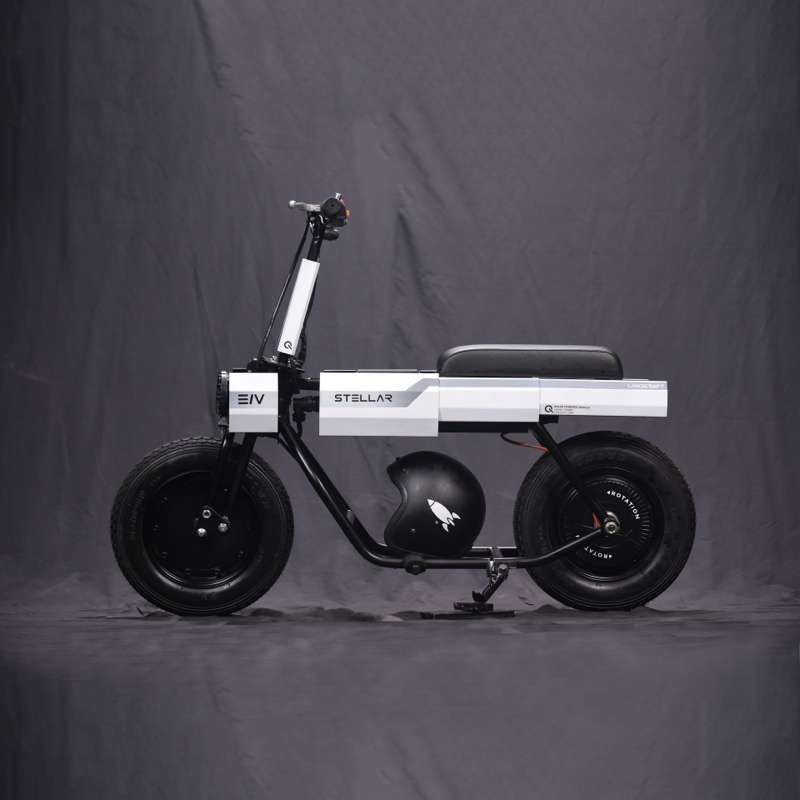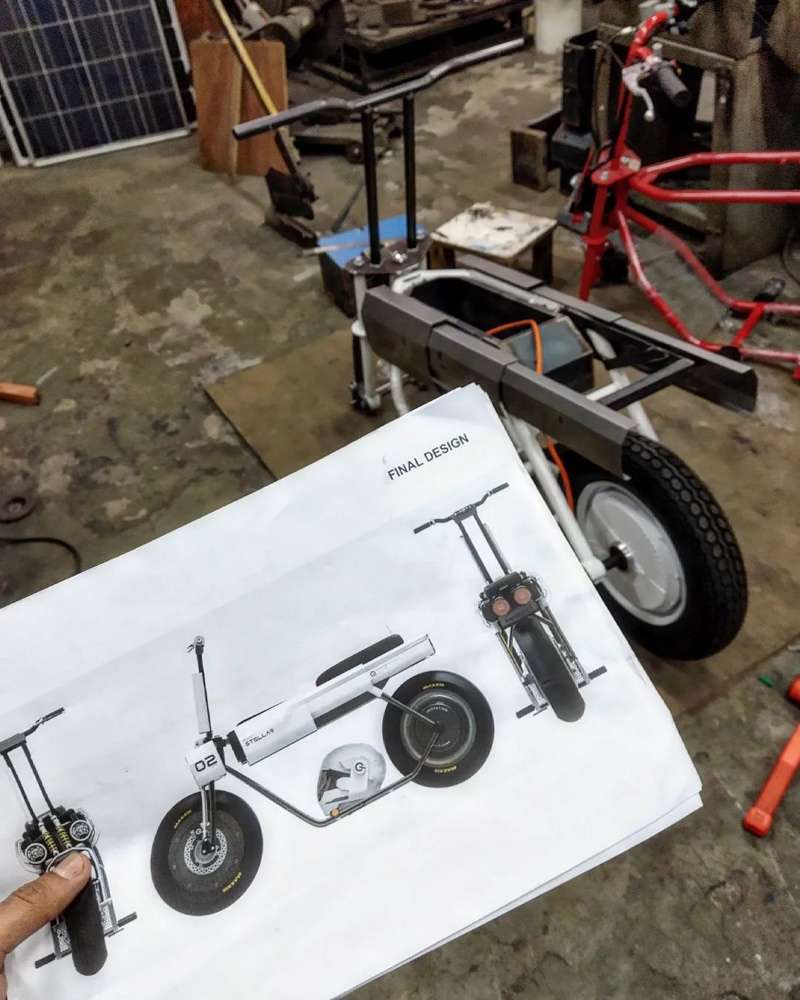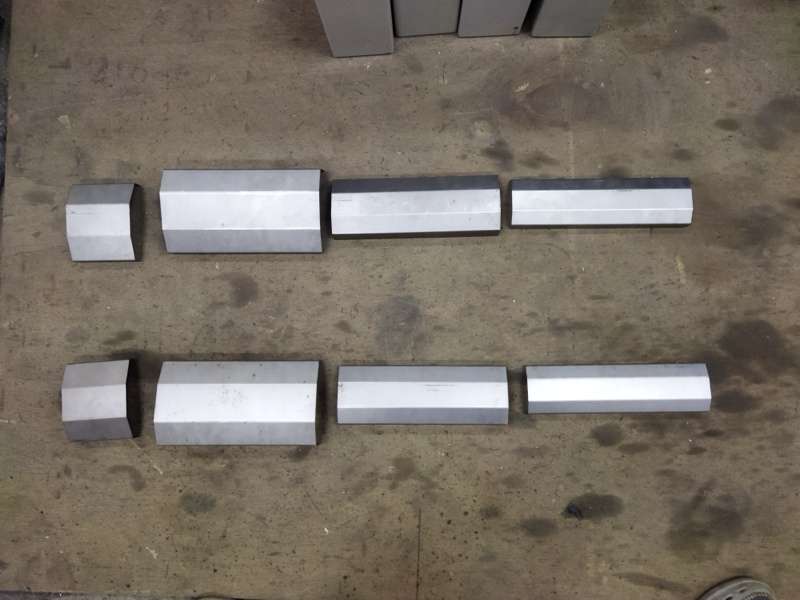 Source: Bike Bound
Source: Bike Bound
From Quest Motors: A two-wheeled electric landing craft…
“Solarpunk” is a science fiction subgenre that imagines a future where renewable energy, a lessening of pollution, and a more sustainable relationship with the natural world aren’t just ambitions, but realities. Films like Avatar, Black Panther, Tomorrowland, Oblivion, and even the new Star Treks are regarded as major entries in the genre. If you’re a motorhead, the future tech displayed in such films is a big part of the viewing pleasure.
 We’re now living in a time when technology is leaping straight from the pages of science fiction, and the vehicles in our everyday world seem increasingly close to space-age tech. Heavy-lift drones, civilian space flight, and electric vehicles with ever greater range and power.
We’re now living in a time when technology is leaping straight from the pages of science fiction, and the vehicles in our everyday world seem increasingly close to space-age tech. Heavy-lift drones, civilian space flight, and electric vehicles with ever greater range and power.
Our new friend Fajar Ismail (@fjismail) is an industrial designer who works for Quest Motors, an electric motorcycle startup and custom EV workshop based in Bandung, Indonesia, and founded by former Tesla senior engineer Niko Questera. Fajar and team set out to create an electric daily commuter that looked like a landing craft or two-wheeled rover from a science fiction film, dropped onto an alien planet from an exploratory starship:
“From the beginning, we wanted to create something that felt futuristic and forward-thinking, much like the advanced technology and concepts you’d see in space exploration.”
Not only that, but the minibike needed to function well on the busy Indonesian streets of their tropical homeland, taking Fajar back and forth to work each day. They started with a 2021 Quest Motors Atom Alpha. The bike is powered by a 1000-watt BLDC (Brushless DC Electric Motor) with a 720Wh lithium-ion battery and a solar panel display installed where the gas tank would be on an ICE machine.
 For the chassis and bodywork, Fajar and team worked to combine futuristic and classic custom elements. The bodywork is made from 2mm sheet metal mounted so as to “float” over a tubular steel chassis, giving the machine a very space-age look akin to satellites and sci-fi starships, while a custom springer fork with dual shocks gives a nod toward the old school, as do the club-style Harley high-rise handlebars.
For the chassis and bodywork, Fajar and team worked to combine futuristic and classic custom elements. The bodywork is made from 2mm sheet metal mounted so as to “float” over a tubular steel chassis, giving the machine a very space-age look akin to satellites and sci-fi starships, while a custom springer fork with dual shocks gives a nod toward the old school, as do the club-style Harley high-rise handlebars.
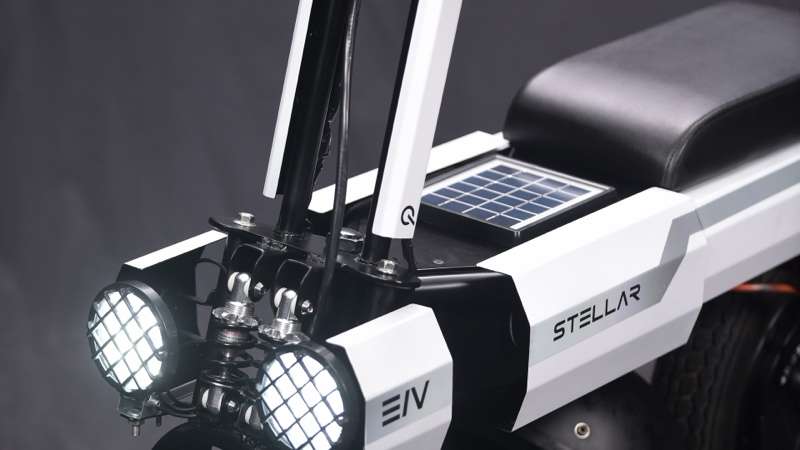 The design is highly distinctive; the “Stellar” would look right at home in any of the science fiction films listed above. Fajar, who uses the bike as his daily driver, says the riding experience is just as distinctive:
The design is highly distinctive; the “Stellar” would look right at home in any of the science fiction films listed above. Fajar, who uses the bike as his daily driver, says the riding experience is just as distinctive:
“Every time I stop at a traffic light, without fail, people come up to me or shout from their cars, asking, ‘What bike is this?’ It’s not just a ride, but a conversation starter. The bike’s unique, futuristic look instantly grabs attention, with its outlaw shape and electric hum setting it apart from the typical noise and visual clutter of the road. People are drawn to its compact frame, which might look small at first glance but packs a surprising amount of personality and performance.”
While we still love our internal combustion bikes here at BikeBound — bearing in mind that even the smokiest, thirstiest vintage motorcycle is better for the environment than any new car — we’re intrigued with the future of electric motorcycles and the designers, engineers, and builders like Fajar who are spearheading innovation in this arena. These machines have become particularly suitable for congested cityscapes as a solution to the manic sound, smoke, and refueling challenges of thousands of cars, scooters, and bikes jockeying for position in a relatively limited space.
 “Stellar” is one of the more creative solutions we’ve seen in this space. Bravo to Fajar and team for thinking beyond the internal-combustion box and creating a machine straight out of a science fiction future. Below is our full, in-depth interview with Fajar about the build, and more photos courtesy of Kustomfest, the massive custom festival in Indonesia.
“Stellar” is one of the more creative solutions we’ve seen in this space. Bravo to Fajar and team for thinking beyond the internal-combustion box and creating a machine straight out of a science fiction future. Below is our full, in-depth interview with Fajar about the build, and more photos courtesy of Kustomfest, the massive custom festival in Indonesia.
Stellar: Builder Interview
• Please tell us a bit about yourself, your history with motorcycles, and your workshop.
My name is Fajar Ismail and I am an Industrial Designer and Electric Vehicle builder with a deep passion for everything about vehicle design. Ever since I was a kid, as long as it had some wheels, I would spend hours observing, learning, and tinkering about it, fueling a lifelong interest that led me to pursue a career where I could blend my love for vehicle design and styling.
Today, I am part of Quest Motors, an innovative electric motorcycle startup and custom EV workshop based in Bandung, Indonesia. Quest Motors was founded by Niko Questera, an Ex- Senior engineer from Tesla Motors. At Quest Motors, we don’t just assemble electric vehicles — we build them from scratch, combining state-of-the-art technology with bespoke design. My role allows me to contribute to every stage of the process, from conceptual design to the final custom builds, ensuring that each vehicle reflects our commitment to sustainability, performance, and style.
Our workshop is a dynamic space where creativity meets design and engineering precision. It’s more than just a place to build motorcycles; it’s where ideas come to life. We work closely as a team of designers, engineers, local builders and fellow motorcycle enthusiasts to craft electric motorcycles that are not only eco-friendly but also deliver an exceptional riding experience. It’s a fulfilling journey, and I’m excited to be part of shaping the future of two-wheeled vehicle.
• What was the original inspiration for the build? How did the idea come about?
The Stellar design was heavily inspired by a mix of spacecraft aesthetics, science fiction, and the solar punk genre. From the beginning, we wanted to create something that felt futuristic and forward-thinking, much like the advanced technology and concepts you’d see in space exploration. This vision influenced not only the futuristic shape but also combine with traditional custom elements.
The solar punk influence plays a big role in shaping our design philosophy, as it envisions a future where technology and sustainability coexist. In our homeland of Indonesia, as a tropical country we have more than enough sunlight, because everyday is summer here. We think it can be an unlimited resource energy for our vehicle. This is why we incorporated solar panels into the motorcycle — it’s not just a design statement, but a functional element that aligns with our commitment to eco-friendly technology. The futuristic styling cues, such as unique shape, layered geometric surface with minimalistic graphic.
To give the design an unique twist, we combined these futuristic elements with some traditional old-school custom elements, like the springer fork on the front end. This blend of old and new creates a balance between modern technology and classic craftsmanship, giving the bike a distinctive character. The result is a design that feels both forward-thinking and rooted in the custom motorcycle tradition.
• Tell us more about “STELLAR”…
It’s named “STELLAR,” a landcraft concept for a Post-Petrol Age. Stellar is an electric mini bike designed as a personal daily scooter for short- to mid-range distances. It’s powered by a 1000-watt BLDC electric motor with a 720 Wh Lithium-Ion battery as a powerplant.
Stellar was equipped with solar panels as an additional charging system; it’s suitable for a tropical country like our homeland of Indonesia, which has tons of sunlight resource shine every year, because range anxiety is a classic issue for electric vehicles. The solar panel is placed right where the fuel tank of gasoline powered counterpart would be.
Talking about the exterior styling, It combines traditional custom elements and futuristic looks. We made custom body panels from 2mm bent metal plate stacked to cover the tubular chassis. It’s painted white with minimal graphics, as we tried to keep it as clean as possible.
As for the chassis, we made a custom springer fork with dual suspension mounted on a rigid frame with a big open space in the middle of chassis to carry a helmet and some grocery stuff, as it’s for daily use.
The handlebar concept was influenced by club-style Harleys with high risers. It might be a mini bike but the rider must be in an upright and comfortable position.
• Can you tell us what it’s like to ride “STELLAR”?
Riding the STELLAR as my personal daily driver is a truly distinctive experience. Every time I stop at a traffic light, without fail, people come up to me or shout from their cars, asking, “What bike is this?” It’s not just a ride, but a conversation starter.
The bike’s unique, futuristic look instantly grabs attention, with its outlaw shape and electric hum setting it apart from the typical noise and visual clutter of the road. People are drawn to its compact frame, which might look small at first glance but packs a surprising amount of personality and performance.
The best part about riding STELLAR as my daily commuter is its practicality mixed with style. It’s light and nimble, making it easy to navigate through city streets and tight spaces, yet its high-riser handlebars give me an upright like riding a club-style Harley, a comfortable riding position that feels stable and commanding.
The 1000 watt electric motor provides smooth and instant torque, so I can effortlessly move from a standstill to cruising speed without the jerky transitions of traditional engines. It’s perfect for stop-and-go traffic, and being an electric bike, it’s not only quieter but also more eco-friendly. With a big open space in the middle of the frame allow me to carry some grocery stuff. It has 40km trip range with 40km top speed, it’s enough for my daily use.
• Was there anything done during this build that you are particularly proud of?
One aspect of this build that I’m particularly proud is taking the concept from a paper sketch into metal sheet. I thoroughly enjoyed the entire creative process — transforming an initial idea from sketching, 3D modeling, and rendering into a tangible prototype is always exciting.
But what made this build especially unique was the challenge of working on a mini bike. Since there aren’t many aftermarket parts available for this size in the marketplace, I had to custom-design and fabricate a lot of components like the custom 10-inch front rim, springer fork, handlebars, and body panels to ensure they fit perfectly.
It was a highly hands-on, problem-solving experience — every part needed to be tailored specifically for the bike. From fabricating the frame to creating custom brackets and mounts, it pushed my creativity and technical skills to the limit. This kind of work goes beyond simply assembling a bike; it’s about crafting something entirely your own from the ground up.
Seeing it all come together — knowing that nearly every part was custom-made to fit this specific design — gave me a deep sense of pride. The final result is more than just a bike; it’s a reflection of my own craftsmanship and attention to detail.
Build Process Photos
Follow the Builders
Web: www.behance.net/fjismail | questmotors.id
Instagram: @fjismail | @quest.motors
Photos: Kustomfest



